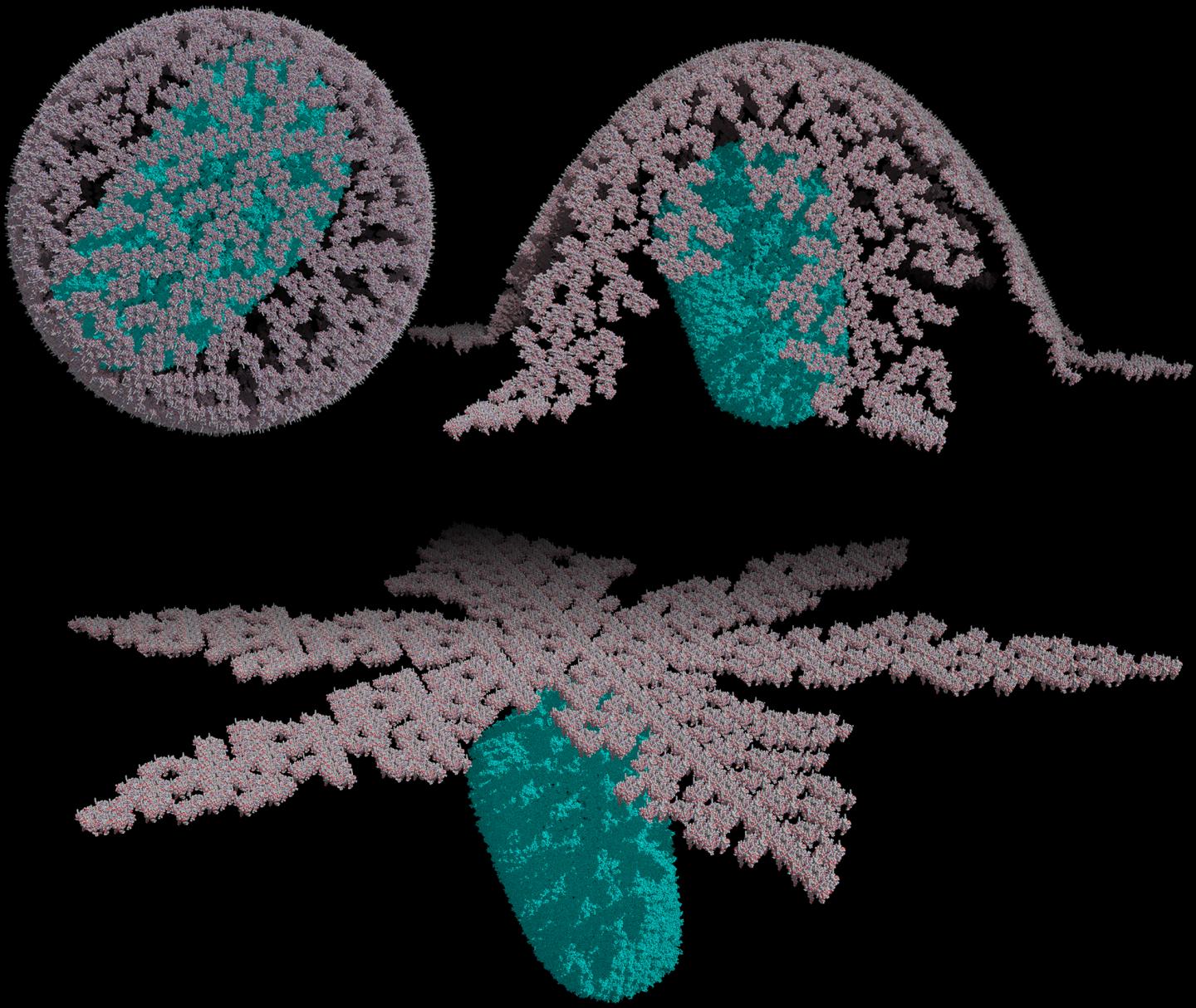A newly proposed model for the shape of the HIV-1 viral shell may change how we understand the disease

Credit: Marcelo Marcet
The matrix shell of the HIV-1 virus may have a different shape than previously thought, and a newly proposed model has significant implications for understanding how the virus functions, according to a new study by University of Alberta scientists.
The research suggests that the HIV-1 virus is housed within a spherical matrix shell. When it infects a healthy cell, the shell fuses to the outside of the target cell and then releases the viral capsid inside where it attacks the cell.
“Our new proposed structure for the HIV-1 virus has a very peculiar shape, almost like petals of a flower,” said Sean Graves, instructor in the Department of Mathematical and Statistical Sciences and co-author on the study. “A better structural knowledge of the matrix shell may help us understand the fusing and infection process.” Graves is also coordinator of the Decima Robinson Support Centre, providing support to more than 1000 undergraduate students each term.
The research shows that the previous model used to describe the structure of the HIV-1 matrix shell was mathematically impossible and provides a viable alternative. While it is too early to anticipate whether the model will translate into new treatment for HIV, the research will help scientists to better understand and make predictions about the behaviour of the HIV-1 virus. Around the world, nearly 38 million people suffer from HIV or AIDS.
“Our contribution uses mathematical principles to help guide the scientific community in the right direction,” added Marcelo Marcet-Palacios, adjunct professor of medicine in the Faculty of Medicine & Dentistry and co-author. “If our model is correct, then we can begin investigating ways we could block or interrupt the mechanism of viral entry. For example, by using a medication that could cross-link the ‘petals’ of the structure together to prevent the opening of the particle and thus stopping entry of the viral genome into the host cell.”
The model is available to anyone, anywhere in the world online.
This research is the result of the work of an interdisciplinary team from the fields of biology, mathematics and computing science. One such collaborator is Weijie Sun, Faculty of Science alumnus and a former student of Graves’.
“This collaboration made it possible to come up with a new model consistent with previously observed evidence and allowed us to develop a computer program freely accessible online that other scientists around the world can use to recreate our work and further develop this new model,” said Sun. “It is incredible what can be achieved in science when experts from different disciplines get together and collaborate.”
###
The paper, “Mathematical determination of the HIV-1 matrix shell structure and its impact on the biology of HIV-1,” was published in PLOS ONE(doi: 10.1371/journal.pone.0224965).
Media Contact
Katie Willis
[email protected]
780-267-0880
Original Source
https:/
Related Journal Article
http://dx.





